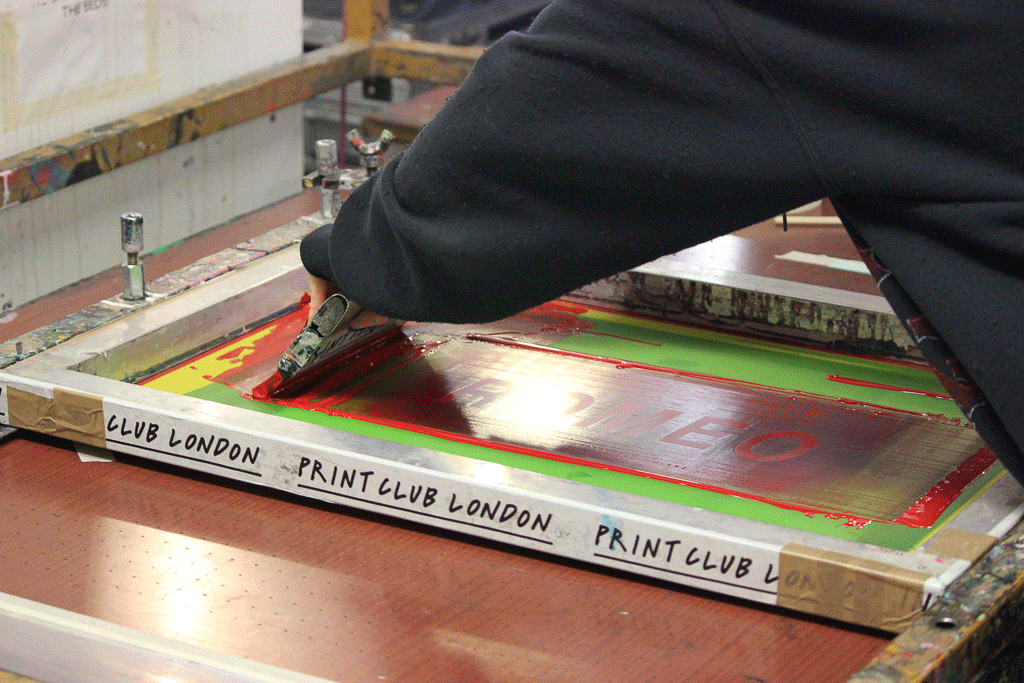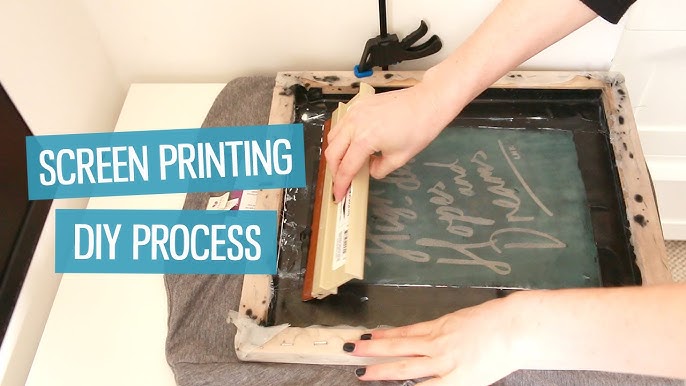ChatGPT said: Top insights to work with 10:9 Design Texas for promotional products
Discover the Numerous Kinds Of Screen Printing Techniques for Your Following Task
Screen printing supplies a varied series of strategies that can boost any kind of imaginative task. From traditional approaches like serigraphy to modern-day innovations such as direct-to-garment printing, each approach has its unique benefits. Specialized options, consisting of eco-friendly and metallic inks, introduce also much more opportunities. Recognizing these methods can considerably impact the last end result. Nevertheless, the challenge depends on picking the most suitable approach for particular needs and wanted impacts. What aspects should one think about?

The Basics of Screen Printing
Although screen printing might appear complicated, it is basically a simple procedure that entails transferring ink with a mesh screen onto numerous surface areas. The strategy starts with the creation of a stencil, which defines the layout to be published. This pattern is affixed to a mesh screen, usually constructed from polyester or nylon. As soon as the stencil is in place, ink is put on the screen and pushed with the mesh utilizing a squeegee, leading to the wanted pattern being published on the underlying product.
Screen printing can be done on a large range of substrates, including plastic, paper, and textile, making it a flexible option for various jobs. The process enables lively colors and complex styles, making it popular in sectors such as art, style, and advertising. Understanding these essentials outfits people with the foundational expertise called for to check out even more advanced techniques in screen printing.
Typical Screen Printing Techniques
Standard screen printing techniques have actually been utilized for centuries, preserving the workmanship and creativity of this method. This strategy uses a mesh screen to transfer ink onto a substratum, such as fabric or paper, permitting long-lasting and lively styles. The procedure begins with developing a stencil, which obstructs specific locations of the screen to control where the ink will certainly be applied.
One preferred technique is serigraphy, commonly made use of for artistic prints and restricted editions. Another is using water-based inks, which are green and provide a soft feel on textiles - 10:9 Design Screen Printing. In addition, traditional methods can include hands-on printing, where artisans apply ink with a squeegee, guaranteeing precision and attention to detail
These strategies continue to be valued in the sector for their responsive high quality and the special appearances they create, attracting both designers and consumers that value the heritage of screen printing.
Digital Screen Printing Innovations
As the need for faster production and personalization in the printing industry has actually risen, digital screen printing developments have arised as a game-changer. This innovation blends typical screen printing approaches with digital processes, enabling fast prototyping and elaborate designs that were formerly tough to accomplish. One significant innovation is the intro of direct-to-garment (DTG) printing, which helps with high-quality, full-color prints on numerous textiles without the need for displays. Additionally, innovations in ink formulas have actually caused environmentally friendly alternatives that preserve vivid colors while minimizing ecological impact. Using automated systems further enhances production, minimizing labor prices and boosting precision. These advancements not only accommodate small set orders and individualized layouts however also enable quicker turnaround times, making them excellent for services concentrated on meeting consumer demands in a hectic market. Digital screen printing, subsequently, stands for a crucial advancement in the domain name of printing methods.
Specialized Screen Printing Methods
Checking out specialized screen printing techniques reveals a diverse variety of strategies that push the borders of creative thinking and functionality in the printing market. Among these, glow-in-the-dark inks supply an unique visual effect, making styles come to life in low-light problems. Metal inks, recognized for their glittering coating, include a touch of deluxe to published products. Another innovative method is discharge Extra resources printing, which removes dye from the fabric instead of adding ink, resulting in a soft, vintage feel. High-density printing creates a raised texture on the surface, enhancing responsive involvement. Additionally, water-based inks are gaining appeal for their dynamic colors and lowered ecological impact. Each of these specialized techniques satisfies certain layout requirements, making it possible for brands and artists to develop standout items that resonate with their audiences. By leveraging these approaches, businesses can boost their screen printing jobs to new elevations, making certain remarkable perceptions.
Eco-Friendly Screen Printing Options
Environment-friendly screen printing choices are gaining grip as the market shifts in the direction of sustainability. Sustainable ink choices and using naturally degradable materials are vital elements in reducing the ecological impact of the printing procedure. By embracing these techniques, screen printers can add to a more lasting future while preserving top quality outcomes.
Sustainable Ink Selections

Biodegradable Materials Usage
As the screen printing sector progresses, the consolidation of naturally degradable materials is ending up being progressively essential for eco mindful practices. Developers and makers are now checking out inks and substratums made from all-natural, renewable energies that decompose a lot more efficiently than traditional equivalents. These biodegradable options decrease plastic waste and minimize ecological effect, lining up with the expanding demand for lasting items.
Common examples consist of water-based inks and natural cotton fabrics, both of which reduce hazardous chemicals and promote eco-friendliness. Brand names that embrace these products frequently improve their market allure, attracting consumers that focus on sustainability. As understanding of ecological problems remains to rise, the shift in the direction of biodegradable materials in screen printing is most likely to gain energy, promoting a greener market requirement.
Choosing the Right Technique for Your Job
How can one identify the most suitable screen printing method for a particular job? The decision hinges on numerous elements, consisting of the material to be published on, the complexity of the design, and the preferred manufacturing quantity - 10:9 Design contact. As an example, direct-to-garment printing is suitable for detailed layouts with numerous shades, while standard screen printing succeeds for larger runs of simpler graphics
Furthermore, consideration of the end-use of the published item is necessary. For outside applications, techniques that offer sturdiness and climate resistance, such as plastisol ink, may be favored. Conversely, environmentally-conscious projects may take advantage of biodegradable materials or water-based inks.
Ultimately, recognizing the project's distinct demands enables an educated choice, guaranteeing both aesthetic allure and functional long life. By evaluating style intricacy, material compatibility, and manufacturing scale, one can successfully select the most ideal screen printing technique to fulfill their task's goals.
Regularly Asked Inquiries
What Is the Background of Screen Printing?
Screen printing came from ancient China around 1000 AD, advancing through Japan and Europe. By the 20th century, it became prominent in business art and style, changing just check here how layouts were generated and dispersed around the world.

Just how Do I Prepare Art Work for Screen Printing?
To prepare art work for screen printing, one should assure high resolution, make use of an appropriate shade mode, develop separate layers for every color, and transform message to outlines, ensuring compatibility with the printing process and preferred result.
What Products Are Ideal for Screen Printing?
The very best materials for screen printing consist of high-quality inks, durable displays, and ideal substratums like cotton, polyester, or blends. In addition, utilizing appropriate solution and squeegees can boost the printing process and results.
Can I Evaluate Publish at Home?
Yes, screen printing in the house is possible. With the best materials, setup, and strategies, people can produce high-grade prints. Nevertheless, mindful factor to consider of office and equipment is essential for effective results.

What Prevail Errors in Screen Printing?
Usual mistakes in screen printing include improper exposure times, poor ink uniformity, misalignment of displays, insufficient cleansing of products, and overlooking to check prints. These errors can endanger the quality and accuracy of the final item.
Screen printing might appear complicated, it is essentially a simple process that includes moving ink with a mesh screen onto different surface areas. As the need for faster manufacturing and modification in the printing sector has actually surged, electronic screen printing advancements have arised as a game-changer. Exploring specialty screen printing methods exposes a varied selection of strategies that push the limits of creativity and functionality in the printing industry. The ideal products for screen printing consist of premium inks, resilient screens, and suitable substratums like cotton, polyester, or blends (10:9 Design contact). Usual errors in screen printing include incorrect direct exposure times, poor ink consistency, misalignment of displays, inadequate cleaning of materials, and disregarding to examine prints